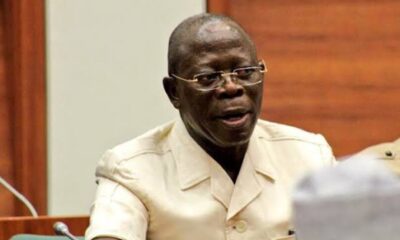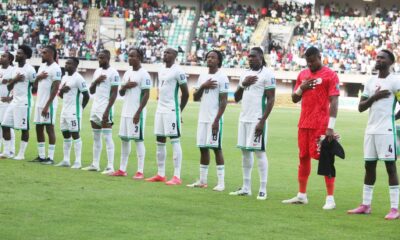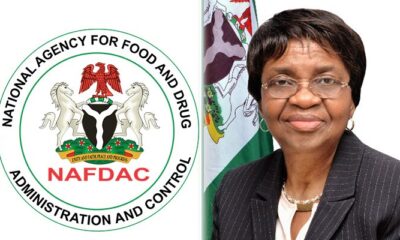Vehicular and business activities were paralysed across parts of Lagos State on Wednesday after hours of heavy downpour triggered flash floods in several communities in the state.
It was observed that the downpour wreaked havoc in flood-prone areas across the state, which included Maryland, Lekki, Ogba, and Ikorodu.
This is as residents and business owners lamented how their homes and shops were overrun by the flood.
Similarly, multiple videos seen across social media platforms by our correspondents showed residents wading through their flooded neighbourhoods, while motorists were also seen moving at a slow pace on flooded roads.
On Olatunji Street in Maryland, the overflow of a canal cut off access to the adjoining Mende community.
A resident, Chinasa Nnadi, said the flood had been a recurring sight whenever it rained and as long as the residents in both neighbourhoods could remember.
She said, “This has been happening for years now, and it’s very hard for vehicles to go in or out of there. People even swim to their houses. It is not easy for people living around there to come out of their houses because the flood is too much. Some will even go as far as relocating to another place due to the flood.”
A business owner who identified himself simply as Kalu and had lived there for three years said he was amazed at how quickly the flood spread across the street.
He said, “I watched as people tried to scoop water out of their homes after it entered their houses. I also suffered the same fate as the water flowed into my shop.”
A member of a church in the area, identified simply as Christiana, also narrated how the worship centre was flooded, destroying some instruments in the process.
She said, “The flood has affected our church’s musical instruments. We will have to spend lots of money either to fix or replace them. When the canal is full, the water gets into the church, and it reaches half the building of the church, it causes extreme damage.”
The downpour, however, compounded the woes of motorists and pedestrians as they were trapped in the gridlock that built up on several flooded roads across the state.
In some areas, vehicles broke down on the waterlogged roads, worsening the situation for commuters who spent long hours waiting to board buses.
In its usual look during a downpour, the Ogba-Wempco junction was flooded, affecting vehicular movement in the area.
Sharing his experience, a commuter, Tunji Abass, lamented how he spent longer time hours in traffic due to the flood.
“The vehicles were moving very slowly due to the flooded portion of the road. It has always been like that during the rainy season. It becomes even worse times that water flows into people’s vehicles. The earlier the government attends to this, the better.”
A resident working in the Ikate area of the state, Victor Obinna, while also lamenting, explained that he resorted to sleeping in the office whenever it rained due to gridlock in the area.
He added that the road linking to his office used to be flooded, and he had to navigate through the water to get there.
He said, “I stay in the office all through the week, and whenever I don’t stay in the office, I walk through the flood before getting to the office. Sometimes, I even had to dress up in the office because by the time I got to the office, half of my body would have been soaked.”
Some weeks ago, PUNCH Metro reported that property worth millions of naira was destroyed in the Ikorodu area of the state.
A video sighted by a correspondent on Wednesday showed how some roads in the community were flooded.
The economic cost of flooding in Lagos is estimated at billions of naira annually, with residents losing homes, shops, vehicles, and man-hours to gridlock. Public health is also at risk, as stagnant floodwater often leaves behind outbreaks of waterborne diseases.
The Lagos State Government, however, sympathised with residents affected by the flash floods that swept through parts of the state, assuring that efforts were ongoing to tackle recurring incidents.
The Commissioner for the Environment and Water Resources, Tokunbo Wahab, in a statement on Wednesday, said Lagos, being a coastal city, remained vulnerable to flooding, especially during heavy rainfall and tidal lock.
He, however, noted that the government had continued to invest in drainage infrastructure, desilting, and enforcement of environmental laws to minimise the impact on residents.
Giving clarity on some affected areas, Wahab explained that flooding around the Kusenla area of Lekki was caused by a technical challenge, adding that the downstream was higher than the existing drainage system.
He added that the government had already awarded a project that included the construction of a pumping station to address the problem.
He further revealed that flooding near the House on the Rock church was linked to illegal construction on floodplains and indiscriminate dumping of refuse in drains, stressing that such activities worsened the situation.
“Clear infractions were observed in some of the videos shared yesterday. The state government will ensure that illegal structures, obstructions, and reclamations carried out without proper approvals are promptly removed,” Wahab said.
“We appeal for understanding and continued cooperation from the public. Keeping our environment clean, refraining from dumping refuse into drains, and avoiding construction on floodplains are vital to achieving a flood-free Lagos. In several of the videos shared yesterday, clear infractions were observed, and @followlasg will ensure that such illegal structures and obstructions are promptly removed. Including those illegal reclamations carried out without the requisite Environmental Impact Assessment Report and the Drainage Clearance.
“We also wish to assure residents that the flooding was a flash flood in some parts of the state and has since receded this morning. The ministry remains committed to strengthening our flood management systems, but this effort requires the support and responsible actions of all Lagosians. Together, we can build a safer, cleaner, and more resilient Lagos,” the statement added.
punch.ng
FOLLOW US ON:
FACEBOOK
TWITTER
PINTEREST
TIKTOK
YOUTUBE
LINKEDIN
TUMBLR
INSTAGRAM






























